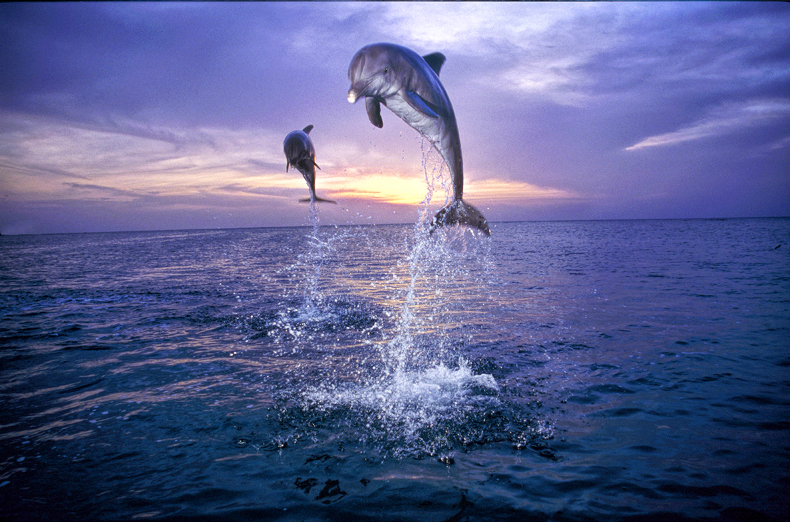
They have no room for hatred
Though they've suffered much pain
From the race we call human.
Olivia Newton-John (The Dolphin Song)
The attraction between dolphins and people goes back thousands of years. Ancient Greek artists decorated coins, pottery, and walls with their pictures, and the animals appear in Greek and Roman mythology. The Greeks considered the dolphin sacred to Apollo, the sun god. For centuries sailors have considered their presence near the bow of a ship as a good omen. They seem to bond with people and seafaring lore is replete with tales of human rescue by these intelligent creatures.
I slither into the lukewarm waters off Roatan, an island east of Honduras, to frolic with trainer Brandy and her flippered friends. It isn't long before we attract a crowd, dolphins zipping all around in their silvery sheen. Soon I find myself eyeball to eyeball with a bottle nose and an impish grin, both of us suspended in hydrospace. They have come to play, like puppies, only wetter. They accept us, pimples and all, with obvious frivolity. I don't know who smiles most, them or us.
It's my last evening in Roatan. Alone on the beach I watch the blending of sea and sky as sunset encircles the island with an iridescent glow, then melts away in a blaze of magenta glory. The sound of waves reaches me in the faintest of whispers. I would pay dearly to own this view, this moment. I journeyed south to join a pod of dolphins in their world, to "see them play in the moonlight, watch them dance in the sun," as Newton-John suggested. I have been graced by their benign presence, a kindred spirit at sea, ever smiling at Poseidon, ever cavorting at the bow of our ships.